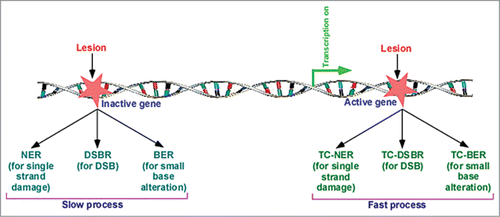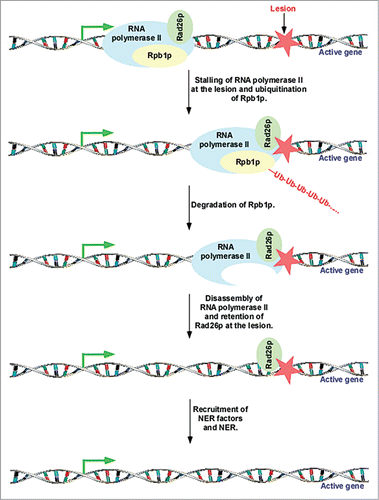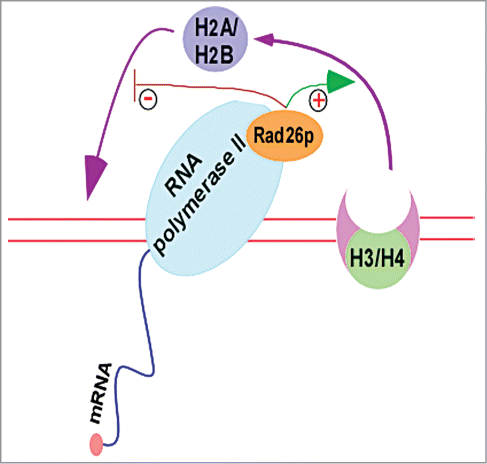Figures & data
Figure 1. Lesion at the active gene is repaired fast in comparison to the repair at the inactive gene or silent region of the genome. NER, nucleotide excision repair; BER, base excision repair; and DSBR, DNA double-strand break repair, are coupled to transcription, and known as TC-NER (transcription-coupled NER), TC-BER, and TC-DSBR, respectively.Citation4, Citation29-31

Figure 2. Rad26p is loaded to the site of DNA lesion in a transcription-dependent manner. Rad26p travels with elongating RNA polymerase II, and recognizes lesion.Citation11,12 Rpb1p is ubiquitinated and degraded after encountering the lesion at the active gene, and subsequently, RNA polymerase II is disassembled to favor the access of DNA repair factors to the lesion for repair.Citation11,12,48

Figure 3. Rad26p facilitates the eviction of histone H2A-H2B dimer and prevents the reassociation of histone H2A-H2B dimer with naked DNA in the wake of elongating RNA polymerse II.Citation11,12,67 “+”and “−” represent stimulation and prevention, respectively. H3/H4, histone H3-H4 tetramer; and H2A/H2B, histone H2A-H2B dimer.

